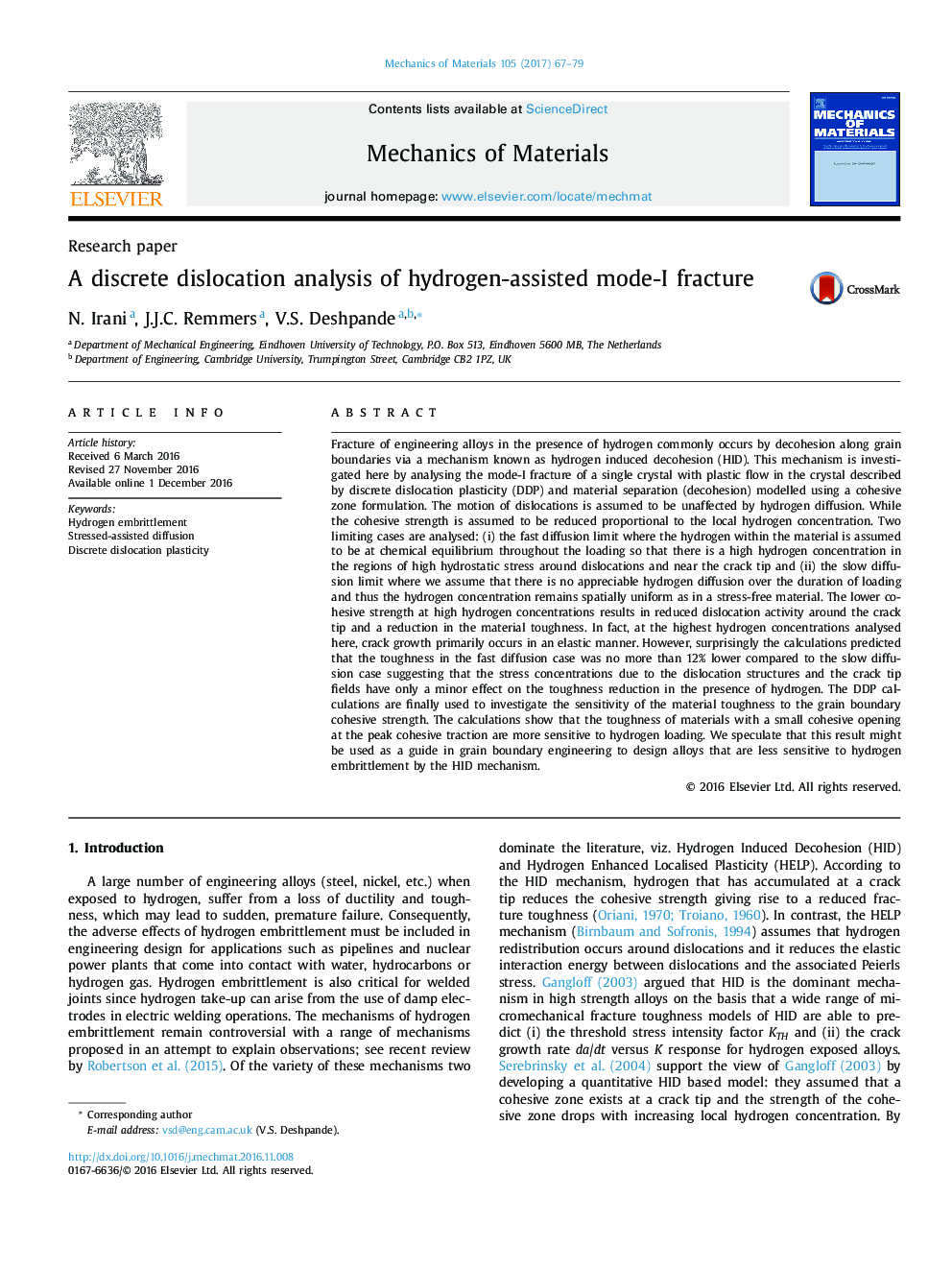| کد مقاله | کد نشریه | سال انتشار | مقاله انگلیسی | نسخه تمام متن |
|---|---|---|---|---|
| 5018538 | 1467434 | 2017 | 13 صفحه PDF | دانلود رایگان |
عنوان انگلیسی مقاله ISI
A discrete dislocation analysis of hydrogen-assisted mode-I fracture
دانلود مقاله + سفارش ترجمه
دانلود مقاله ISI انگلیسی
رایگان برای ایرانیان
کلمات کلیدی
موضوعات مرتبط
مهندسی و علوم پایه
سایر رشته های مهندسی
مهندسی مکانیک
پیش نمایش صفحه اول مقاله

چکیده انگلیسی
Fracture of engineering alloys in the presence of hydrogen commonly occurs by decohesion along grain boundaries via a mechanism known as hydrogen induced decohesion (HID). This mechanism is investigated here by analysing the mode-I fracture of a single crystal with plastic flow in the crystal described by discrete dislocation plasticity (DDP) and material separation (decohesion) modelled using a cohesive zone formulation. The motion of dislocations is assumed to be unaffected by hydrogen diffusion. While the cohesive strength is assumed to be reduced proportional to the local hydrogen concentration. Two limiting cases are analysed: (i) the fast diffusion limit where the hydrogen within the material is assumed to be at chemical equilibrium throughout the loading so that there is a high hydrogen concentration in the regions of high hydrostatic stress around dislocations and near the crack tip and (ii) the slow diffusion limit where we assume that there is no appreciable hydrogen diffusion over the duration of loading and thus the hydrogen concentration remains spatially uniform as in a stress-free material. The lower cohesive strength at high hydrogen concentrations results in reduced dislocation activity around the crack tip and a reduction in the material toughness. In fact, at the highest hydrogen concentrations analysed here, crack growth primarily occurs in an elastic manner. However, surprisingly the calculations predicted that the toughness in the fast diffusion case was no more than 12% lower compared to the slow diffusion case suggesting that the stress concentrations due to the dislocation structures and the crack tip fields have only a minor effect on the toughness reduction in the presence of hydrogen. The DDP calculations are finally used to investigate the sensitivity of the material toughness to the grain boundary cohesive strength. The calculations show that the toughness of materials with a small cohesive opening at the peak cohesive traction are more sensitive to hydrogen loading. We speculate that this result might be used as a guide in grain boundary engineering to design alloys that are less sensitive to hydrogen embrittlement by the HID mechanism.
ناشر
Database: Elsevier - ScienceDirect (ساینس دایرکت)
Journal: Mechanics of Materials - Volume 105, February 2017, Pages 67-79
Journal: Mechanics of Materials - Volume 105, February 2017, Pages 67-79
نویسندگان
N. Irani, J.J.C. Remmers, V.S. Deshpande,